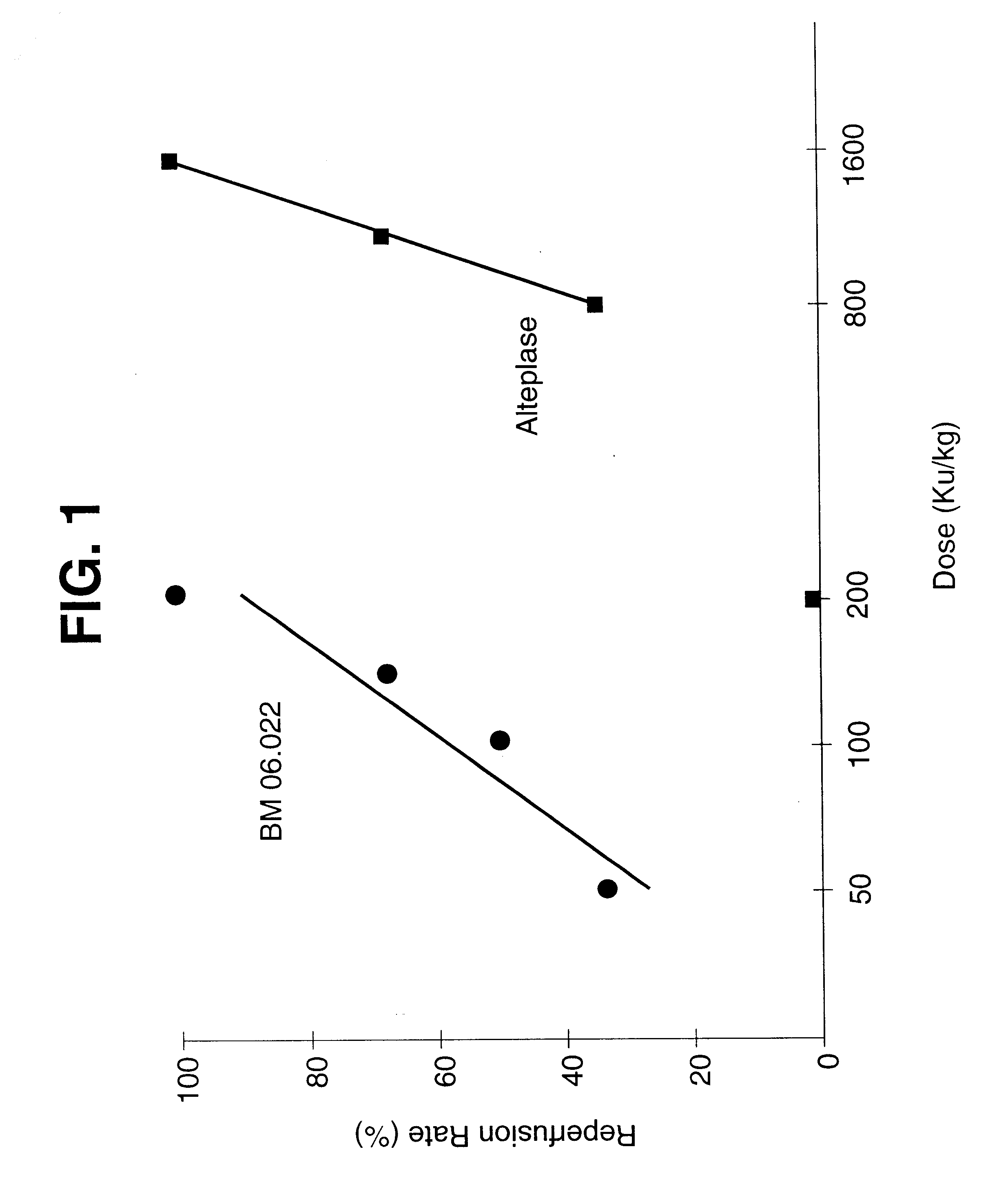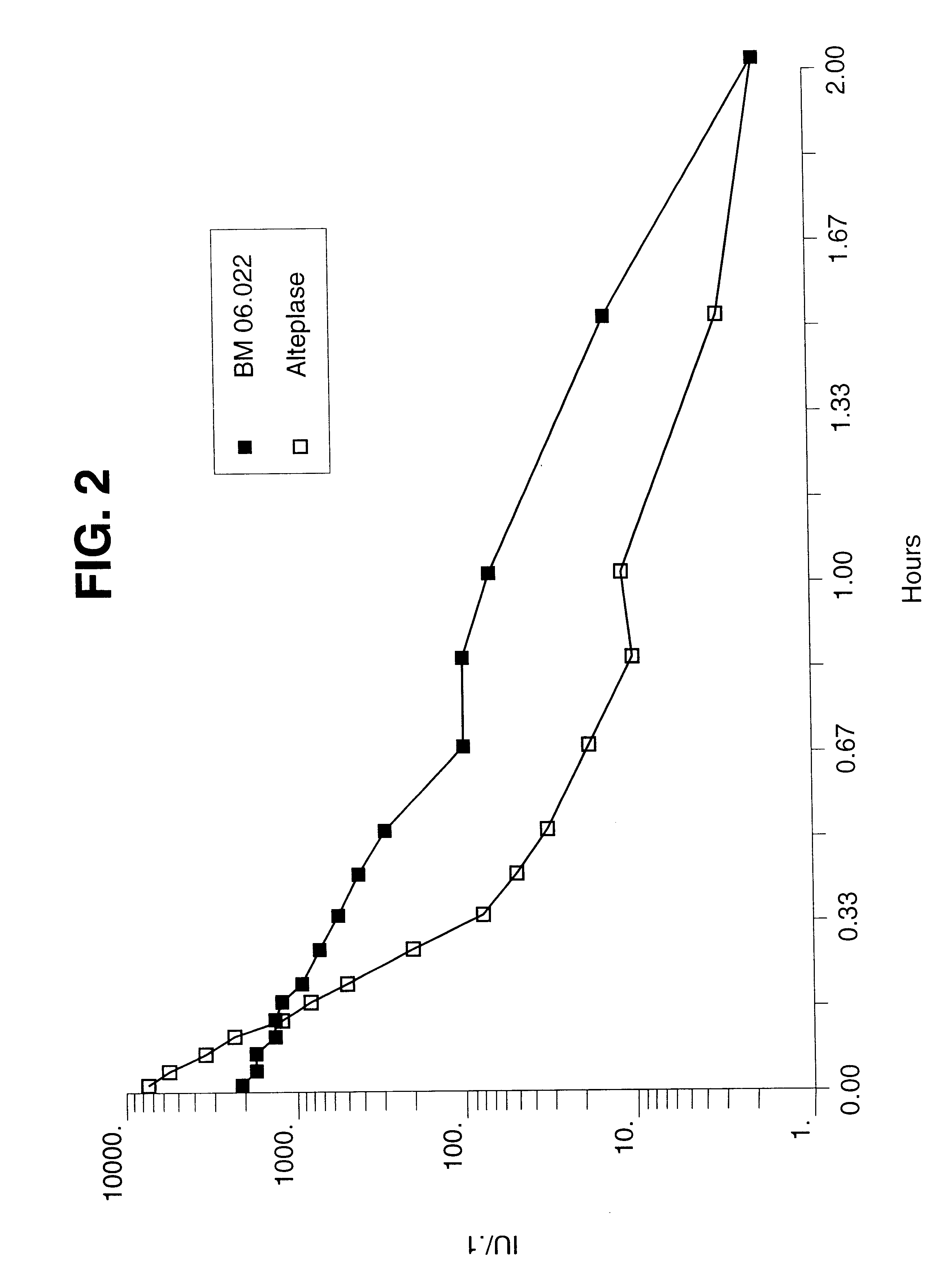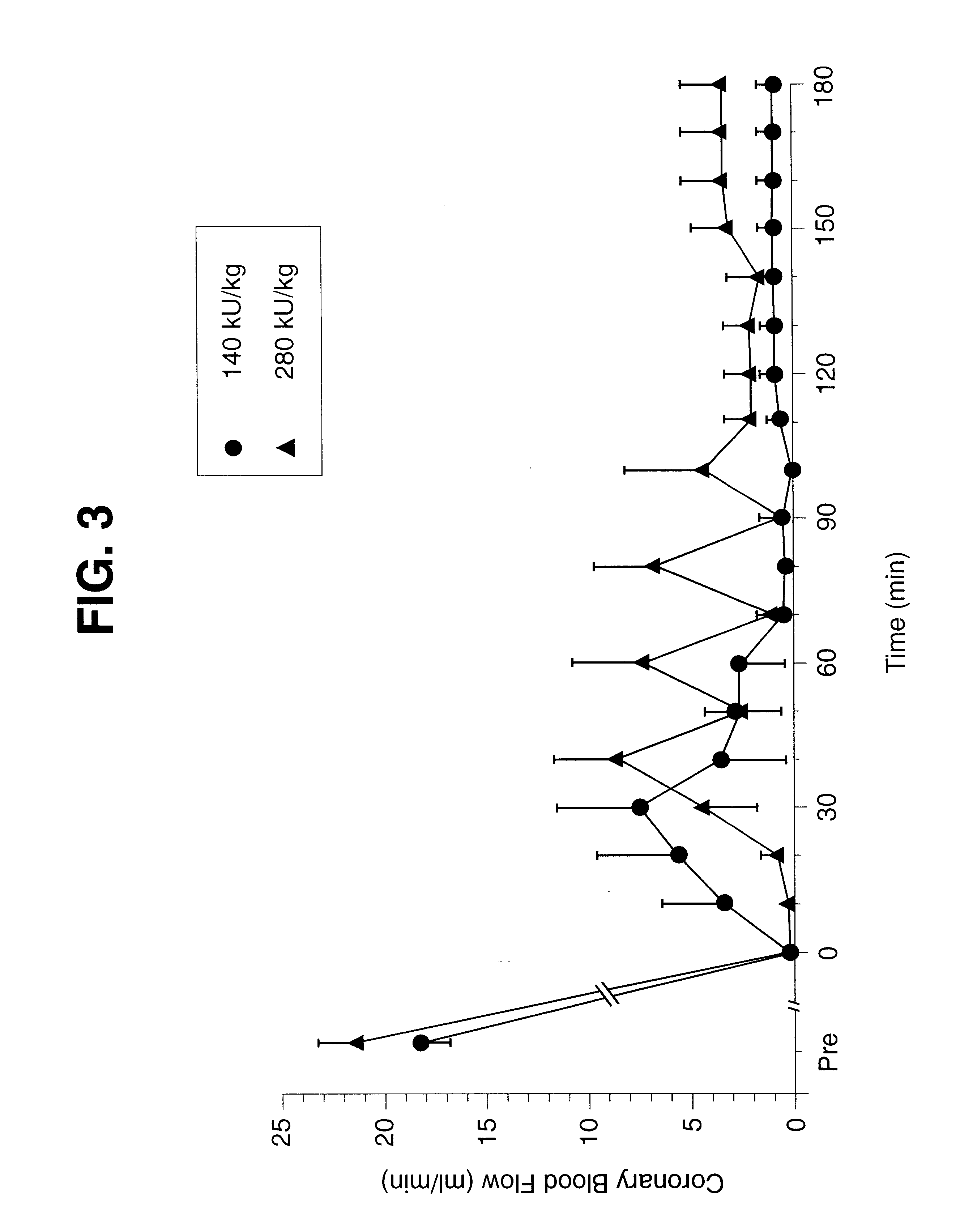Method for treating thromboembolic conditions by inhibiting reocclusion via the use of multiple bolus administration of thrombolytically active proteins
- Summary
- Abstract
- Description
- Claims
- Application Information
AI Technical Summary
Benefits of technology
Problems solved by technology
Method used
Image
Examples
example 2
For the experiments described herein, the same dog model of coronary artery thrombosis as in Example 1 was used. However, in contrast to the experiments in Example 1, the thrombus was aged for one hour instead of only 30 minutes. BM 06.022, i.e. "K2P" was administered either as a single i.v. bolus administration, or the first bolus dose amounted to 140 KU / kg, followed by the second bolus in a dose of 140 or 50 KU / kg of BM 06.022. (44 minutes later). Each of the four experimental group consists of six dogs. Additional parameters for the evaluation were the maximal coronary blood flow which was measured after reperfusion and the coronary blood flow at termination of the experiment three hours after injection. Furthermore, the cumulative patency time was calculated, i.e., the sum of the time intervals after reperfusion in which coronary blood flow was present. The animal model is so designed that, typically, after reperfusion, cyclic flow variations occur with reocclusion. At the end o...
example 3
The thrombolytically active protein K1K2P referred to supra was used for this example. It is non-glycosylated because it is produced by recombinant DNA technology in E. coli cells, has a specific activity of 650,000.+-.200,000 U / mg, and has a dominant half life in dogs of 10.7.+-.1.5 min (mean .+-.SD; n=6) which is 6.7-fold longer than that of rt-PA (1.6.+-.0.2 min; n=6) at identical doses of 200 ku / kg and as measured by an activity assay as described below. Since the half life of rt-PA varies with the dose, the pharmacokinetics of wild type t-PA at 800 ku / kg (=1 mg / kg) was evaluated. At this dose, the half life was 2.93.+-.0.23 min. Therefore, relative to wt-tPA at 800 ku / kg, K1K2P had a 3.7-fold longer half life than t-PA (range: 3.7-6.7). FIG. 6 illustrates the different plasma concentration time curves of K1K2P and rt-PA after i.v. bolus injection of 200 kU / kg in anesthetized dogs.
The plasma concentration of activity of the thrombolytically active proteins, K1K2P and rt-PA were ...
example 4
The present study shows that the combination of very early administration of heparin and thrombolytically active protein in treatment of coronary artery thrombosis in a canine model. Commercially available wt-tPA has a specific activity of 800,000 U / mg. The canine model of left circumflex coronary artery thrombosis was used as described in examples 1, 2 and 3. Briefly, adult beagle dogs of either sex were anesthetized, catheterized, and surgically prepared and instrumented for induction of the coronary artery thrombus. The coronary artery was instrumented with a flow probe to measure coronary blood flow. Zero flow indicated thrombosis; an increase indicated restoration of blood flow (reperfusion) and a decrease to zero indicated reocclusion.
The thrombus was allowed to age for one hour prior to administration of the fibrinolytic agent (t=0 h). One group of animals (n=4) was anticoagulated with intravenous heparin. Anticoagulation was initiated at t=-45 min, i.e., before administratio...
PUM
| Property | Measurement | Unit |
|---|---|---|
| Volume | aaaaa | aaaaa |
| Mass | aaaaa | aaaaa |
| Mass | aaaaa | aaaaa |
Abstract
Description
Claims
Application Information
 Login to View More
Login to View More - R&D
- Intellectual Property
- Life Sciences
- Materials
- Tech Scout
- Unparalleled Data Quality
- Higher Quality Content
- 60% Fewer Hallucinations
Browse by: Latest US Patents, China's latest patents, Technical Efficacy Thesaurus, Application Domain, Technology Topic, Popular Technical Reports.
© 2025 PatSnap. All rights reserved.Legal|Privacy policy|Modern Slavery Act Transparency Statement|Sitemap|About US| Contact US: help@patsnap.com



